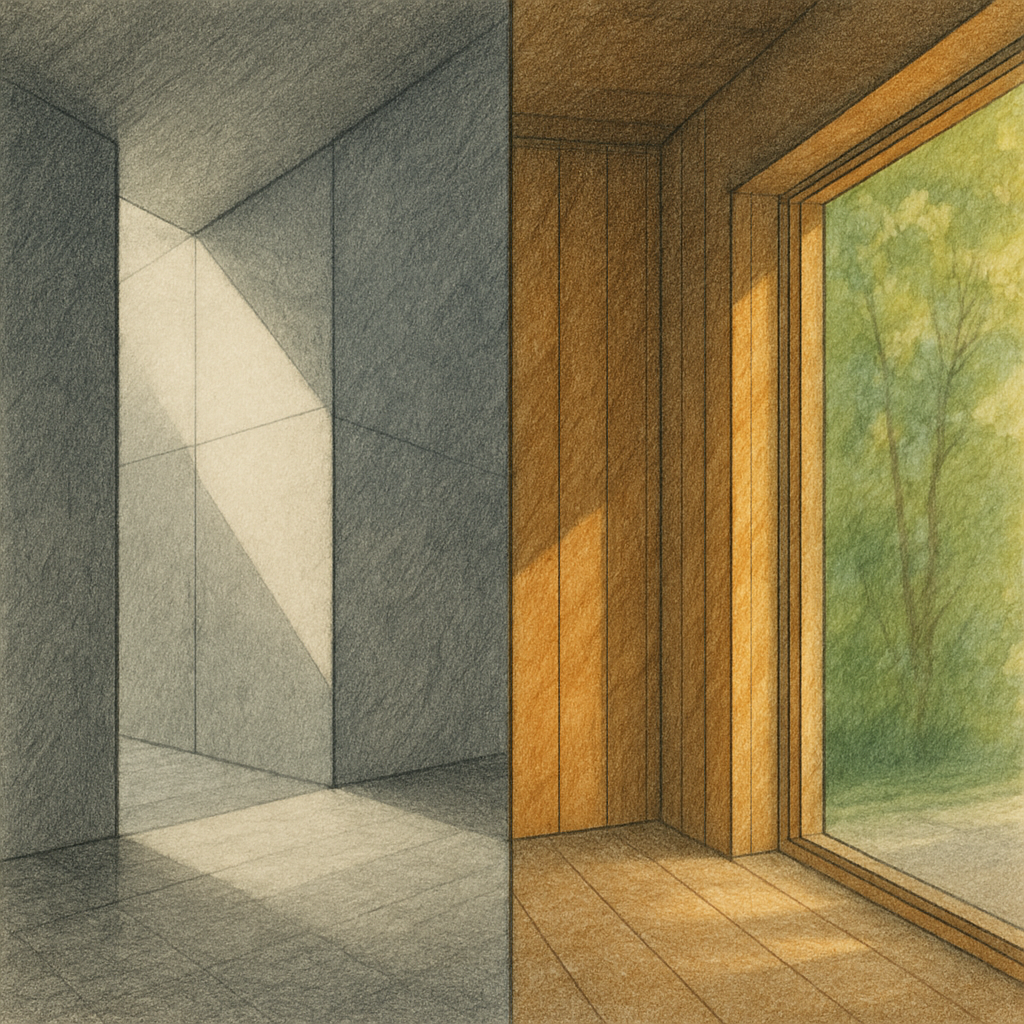“architecture” vs. “Architecture”: Why the Lowercase Matters
In the world of design, where every detail is deliberate, even a single letter can carry weight. That’s certainly the case with architecture—and Architecture. A capital A seems innocuous enough, but within the profession it often signals prestige, complexity, and a certain rarefied air. Lowercase architecture, by contrast, is seen as its humble cousin—everyday buildings, functional spaces, often overlooked. But perhaps that lowercase deserves a second look.
For a long time, I’ve operated in the realm of “architecture.” Practical. Grounded. Livable. The kind of work that shows up in communities, in homes, in schools—not galleries or award books. It’s not chasing magazine covers. It’s not clad in titanium. But it matters.
And maybe that’s precisely why I’ve grown to believe the lowercase is more powerful than it seems.
Capital-A: The Cult of the Icon
Capital-A Architecture tends to signal a particular mode of design: high-budget, high-drama, and often high-maintenance. It exists in the pages of glossy publications and biennales, draped in theoretical frameworks and often divorced from everyday use. In many cases, it’s brilliant. Inspired. Worthy of study.
But it can also be exclusive. Detached. Too often, it is the Architecture that forgets people—their rhythms, their rituals, their real lives. It impresses, but doesn’t always embrace.
It’s no wonder that much of the public feels alienated by Architecture. It’s something that happens to them, not withthem. And as cities grow more disconnected, housing more inaccessible, and buildings more performative than lived-in, we have to ask: who is all this for?
Lowercase-a: The Architecture of Everyday Life
There’s another kind of architecture—the kind that begins with people. It listens before it sketches. It holds a child’s eye-level in its mind’s eye. It thinks about the heat of the afternoon sun and the sound of rain on the roof.
This kind of architecture isn’t lesser. It’s quieter. More thoughtful. It tends to show up in places like a modest home with good winter sun, a school that feels safe and calm, a garden shed built to last. It’s the realm of architects who still draw by hand sometimes. Who meet their clients’ dogs. Who remember that a home’s true centre is often the kitchen table.
This is not anti-A Architecture. It is simply anti-ego. And it’s the realm I find myself working in—and striving to elevate.
The Shift I’m Trying to Make
When I began my practice, I focused on delivering practical outcomes. Meeting budgets, meeting deadlines, meeting briefs. That’s what “architecture” demanded. And it taught me a lot: humility, responsiveness, accountability.
But as time has gone on, I’ve felt something deeper calling. Not to chase Capital-A acclaim, but to bring more soul into the everyday. To infuse even the most functional of spaces with beauty, biophilia, and care. To bridge that gap between the emotional and the built.
To me, that’s the real challenge: not designing for prestige, but for resonance. For memory. For meaning.
So I’ve started using the word “soulful” a lot. Not because it’s trendy—but because it gets at something Capital-A Architecture often forgets: that buildings aren’t just structures, they’re stages for life. They shape our behaviours, our moods, our sense of belonging.
architecture that Feels
Maybe we need a new scale. Not high vs. low. Not star vs. small. But felt vs. unfelt. Because there’s architecture that you walk through and forget instantly—and then there’s architecture that stays with you, even if you can’t explain why. The way the light moved. The smell of timber. The hush in the air.
That kind of experience isn’t accidental. It’s designed.
And that’s what lowercase architecture, done right, can deliver. Not fame, but feeling. Not spectacle, but sanctuary.
Where Daedal Stands
At Daedal, we’re not trying to be loud. We’re not chasing the skyline. But we are here to make better architecture—lowercase, soulful, human. We care about what it feels like to wake up in a room filled with morning light. What it smells like when it rains on a timber deck. What it sounds like when kids run down a hall that echoes just enough to be joyful.
We believe architecture should make life better. Not just in theory—but in the small, real, lived ways.
That doesn’t need a capital letter. Just care.
Final Thought
Capital-A Architecture has its place. It provokes, experiments, and pushes boundaries. But the lowercase is where most people live. And that’s where the most meaningful design can happen—if we pay attention.
So here’s to architecture that listens. That connects. That feels.
Here’s to the lowercase.
